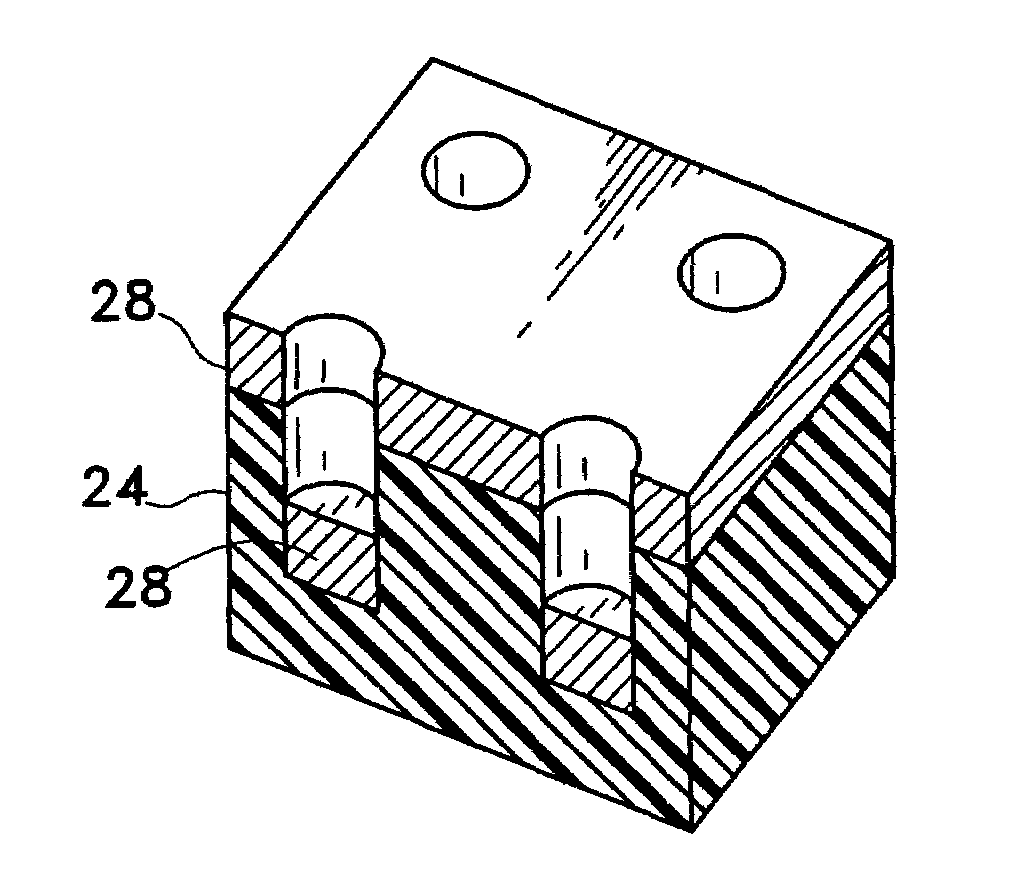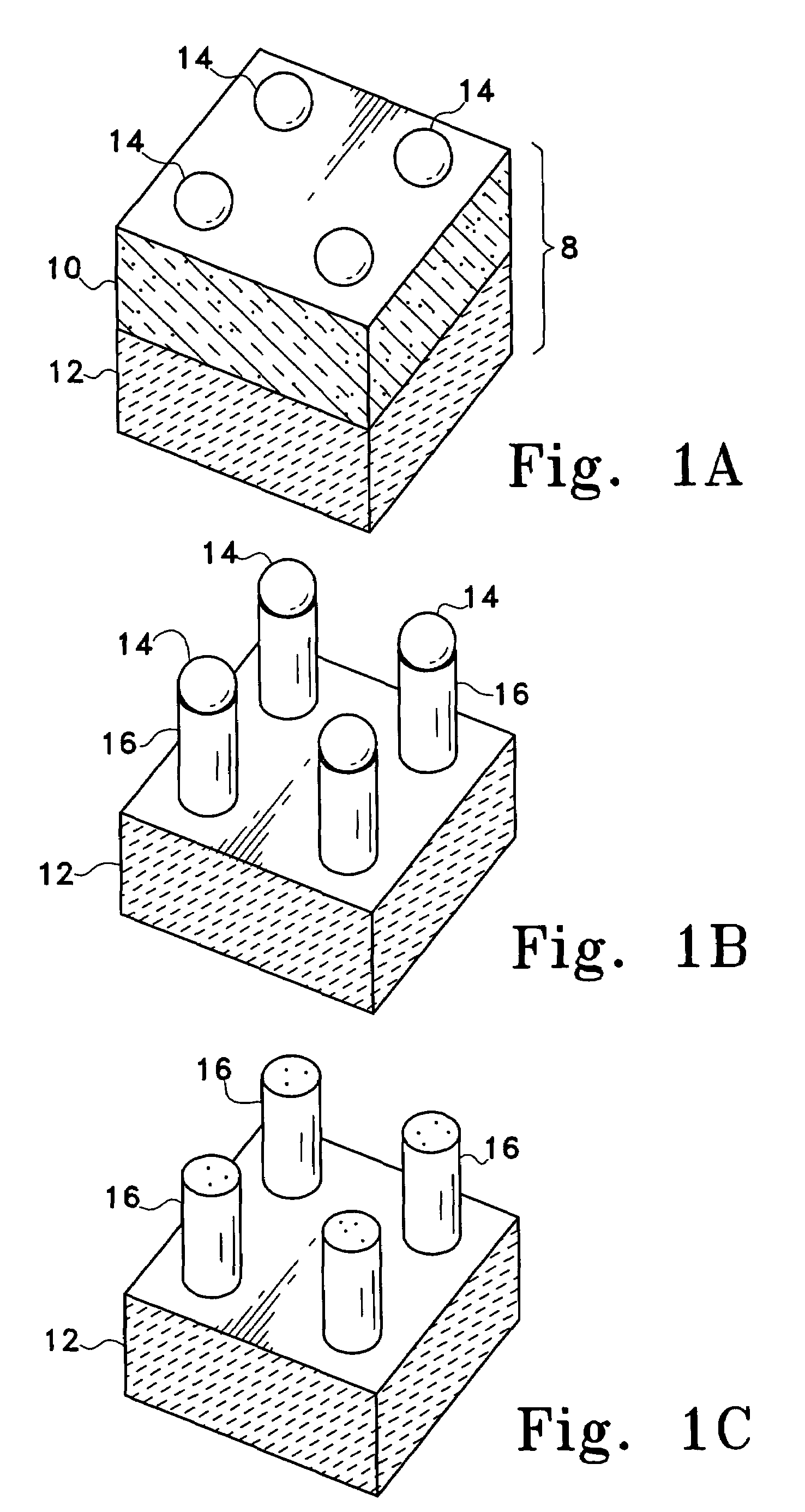Imprinting nanoscale patterns for catalysis and fuel cells
a fuel cell and nano-scale technology, applied in secondary cell manufacturing, electrode manufacturing processes, final product manufacturing, etc., can solve the problems of not providing the required nano-scale resolution, e-beam lithography is too expensive and slow, and the nano-scale pattern would exceed the lower limit of optical lithography, etc., to improve catalysis and fuel cell efficiency, efficient and better energy conversion
- Summary
- Abstract
- Description
- Claims
- Application Information
AI Technical Summary
Benefits of technology
Problems solved by technology
Method used
Image
Examples
Embodiment Construction
I. Preparing the Mold
[0015]The present invention includes methods for making a mold, which has at least one protruding feature having nanoscale dimensions, and using the mold to imprint a membrane, thereby creating a recessed feature, which is a reverse copy of the protruding feature, in the membrane.
[0016]In general, the body of the mold should be constructed of materials that are hard relative to the membrane used during the imprinting process. For example, the mold can be made of metals, dielectrics, semiconductors, ceramics, polymers or combinations thereof. Typically, the mold will include a plurality of features having a desired shape. In a preferred embodiment, the mold is silicon or silicon dioxide.
[0017]The mold is patterned with protruding and / or recessed features, such as pillars, holes, dams, and trenches, with a minimum lateral feature size of about 1 nm. The typical depth (or height) of a feature is from 1 nm to 100 μm, depending on the desired lateral dimension. In ce...
PUM
| Property | Measurement | Unit |
|---|---|---|
| height | aaaaa | aaaaa |
| depth | aaaaa | aaaaa |
| diameter | aaaaa | aaaaa |
Abstract
Description
Claims
Application Information
 Login to View More
Login to View More - R&D
- Intellectual Property
- Life Sciences
- Materials
- Tech Scout
- Unparalleled Data Quality
- Higher Quality Content
- 60% Fewer Hallucinations
Browse by: Latest US Patents, China's latest patents, Technical Efficacy Thesaurus, Application Domain, Technology Topic, Popular Technical Reports.
© 2025 PatSnap. All rights reserved.Legal|Privacy policy|Modern Slavery Act Transparency Statement|Sitemap|About US| Contact US: help@patsnap.com



